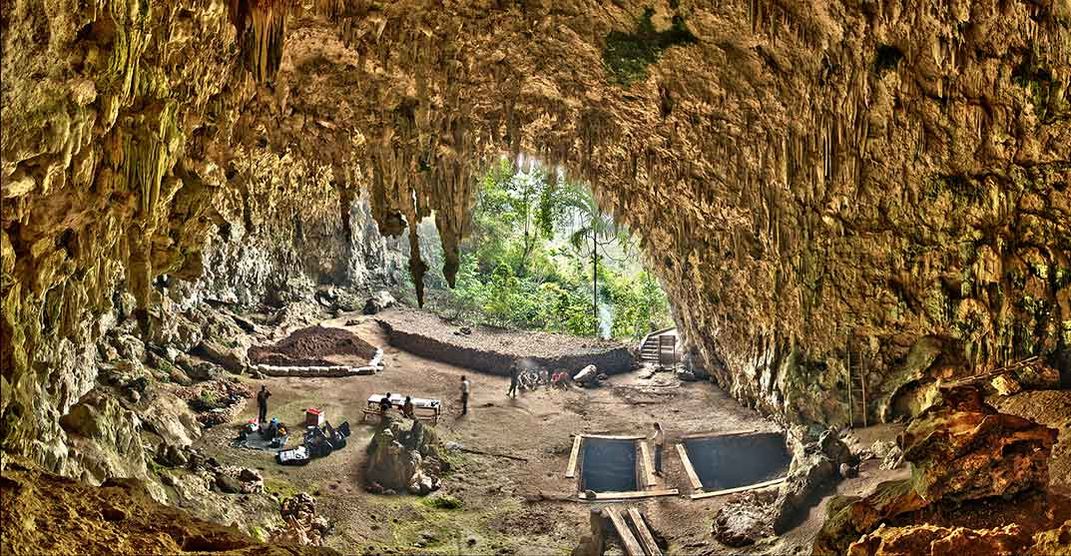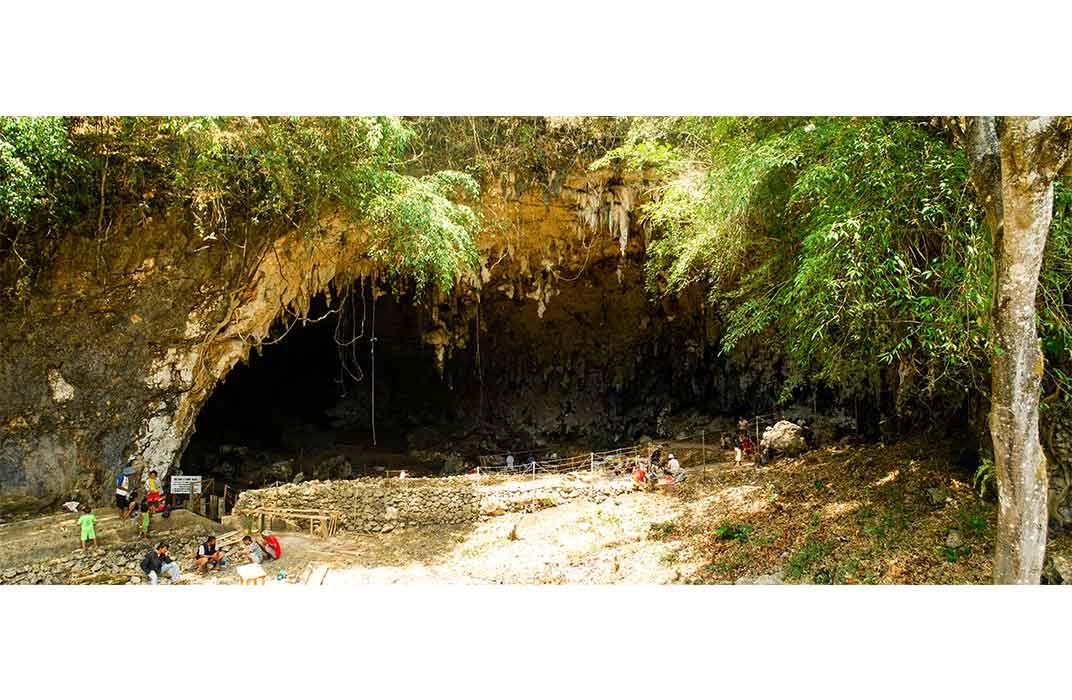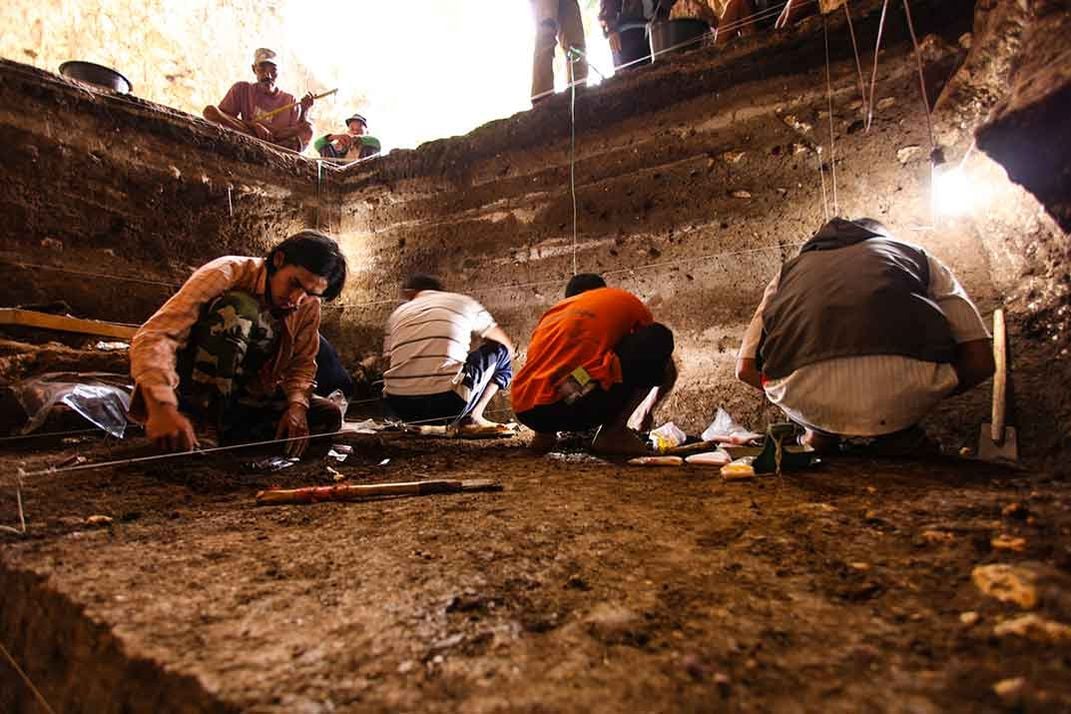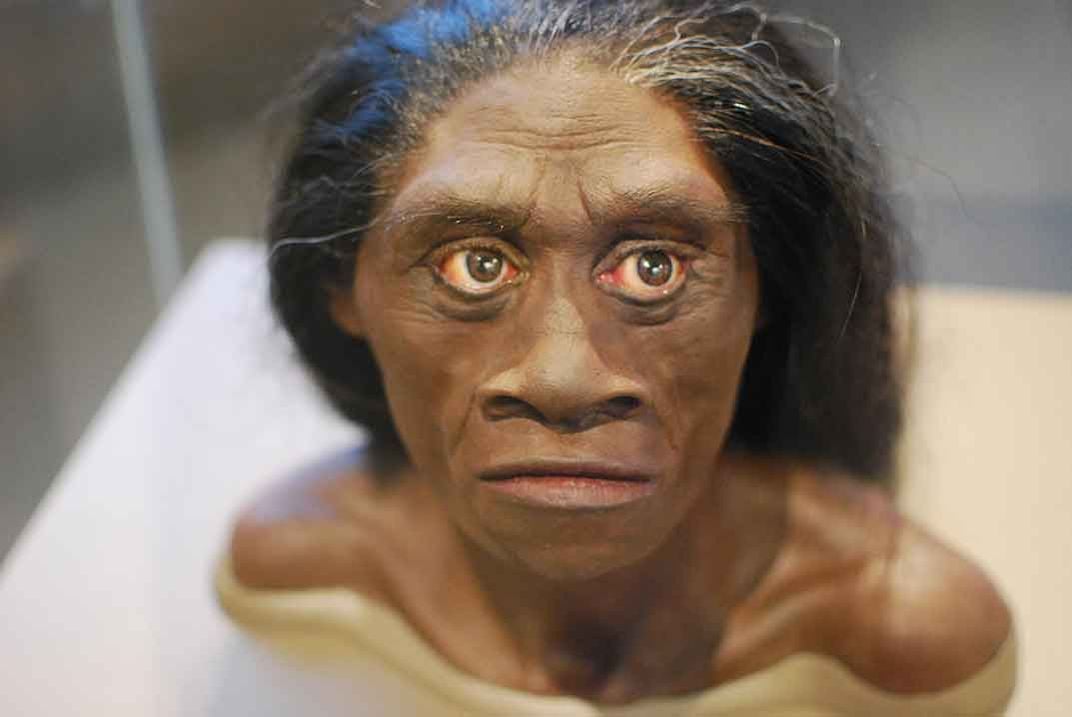“Hobbits” Disappeared Much Earlier Than Previously Thought
If the tiny hominins ever coexisted with modern humans, the arrangement apparently didn’t last long
The mysterious hominin known as the "Hobbit" died out far earlier than previously thought, scientists have learned. The revised age, published today in the journal Nature, could help resolve, or reignite, controversies over the diminutive fossil’s origins. It also raises some intriguing questions about why Homo floresiensis vanished—and what role our own species might have played in its demise.
When the discovery of 3-foot-tall Homo floresiensis and its grapefruit-sized head was announced in 2004, the tiny hominin’s odd mix of ancient and more modern physical features captured the public's imagination and created controversy among scientists tasked with figuring out exactly what kind of creature the unusual bones represented.
Excavations on the Indonesian island of Flores have now revealed that Homo floresiensis called Liang Bua cave home between 190,000 and 50,000 years ago, rather than as recently as 12,000 years ago, which was the surprisingly late date previous research had suggested.
The digs, carried out between 2007 and 2014 by many members of the research team that first discovered the fossil, gradually exposed new parts of the cave only to discover that, thanks to eons of erosion, the sediment layer cake under its floor is unevenly distributed. As teams excavated from the cave’s mouth back toward the middle, it became evident that older deposits had been eroded prior to 20,000 years ago and gradually covered again by new sediments since.
Those younger sediments confused the original dating efforts. Scientists incorrectly associated the Homo floresiensis fossils with the more recent layer, says co-author Thomas Sutikna of the University of Wollongong in Australia, when it’s now clear that they were actually buried in the older layer of sediment.
The bones themselves were also reevaluated for this study with uranium-series dating, which charts the decay of uranium in bones to determine how long they’ve been buried.
Most theories of Homo floresiensis’ origins suggest they are the descendants of an early hominin dispersal. Co-author Matt Tocheri, of the Smithsonian’s National Museum of Natural History and Lakehead University in Thunder Bay, Ontario, says there are two main possibilities.
“The first is that Homo floresiensis is the descendant of Asian Homo erectus, and if this is true, then it implies the smaller body and brain size of Homo floresiensis probably evolved in isolation on the island. The alternative," he says, "is that Homo floresiensis is the descendant of another pre-modern species of Homo that may have been smaller-bodied and smaller-brained to begin with when it reached the island.”
Tocheri notes that the new ages won’t do much to move the needle from one of these options to the other—only the discovery of more fossils will do that. “If there was a book that chronicled the entire evolutionary history of Homo floresiensis, then it would be like we have only a few tattered and torn pages with the rest of the pages missing but hopefully not lost forever,” he says.
Some scientists, though a distinct minority, maintain that Homo floresiensis isn’t a new species at all but an abnormal, dwarfed member of our own Homo sapiens suffering from some ancient pathology like cretinism, microcephaly or Down’s syndrome.
Chris Stringer of the Natural History Museum, London argues that the new dates do impact the feasibility of this scenario—and in fact make it much less likely. “They would seem to fatally undermine remaining claims that the ‘Hobbit’ fossils belong to diseased modern humans, since the material now dates beyond any modern human specimens known from the region,” says Stringer, who wasn’t affiliated with the research.
Was There a Human Hand in the Hobbits’ Extinction?
Adding to the Hobbit’s intrigue was the relatively recent age originally assigned to the fossil, which had pegged it as the last known human species to vanish from the ancient world—excepting our own, of course.
The dates made it possible, though not certain—given the island’s remote location—that our two species coexisted for some significant part of those 40,000 years, which would have been a unique arrangement between modern humans and earlier human species. “I wondered how [Homo floresiensis] could have survived for so long after the arrival of Homo sapiens in the region at least 50,000 years ago, when other forms of human, such as the Neanderthals and Denisovans, had physically disappeared long before,” notes Stringer.
However, it’s still unclear if the Hobbits survived long enough to encounter modern humans at all. The earliest evidence of humans on Flores—in the remote string of islands stretching east of Java—doesn’t appear until some 11,000 years ago. But modern humans were on some of the region’s other islands by 50,000 years ago and had even reached Australia by that time. Their impact there, along with the apparent timing of the Hobbit’s extinction, suggests our own species could have possibly played a dark role in the disappearance of the Hobbits. If, in fact, the two ever met.
“At least for Australia, the weight of evidence points to humans playing a decisive role in the extinction of the giant endemic animals or ‘megafauna’ that once roamed the continent,” says co-author Richard “Bert” Roberts of the University of Wollongong in Australia. “So was Homo floresiensis another casualty of the spread of our species? This is certainly a possibility that we take seriously, but solid evidence is needed in order to demonstrate it. It will definitely be a major focus of further research.”
Homo floresiensis wasn't the only unusual inhabitant of Flores, and, interestingly, many of those creatures also seem to have vanished around the same time. Shifting climates or catastrophic volcanism could have plausibly played roles in these extinctions instead of, or in addition to, the arrival of modern humans, Tocheri notes.
“Theoretically the loss of pygmy Stegodon [an extinct form of elephant] could have caused a disastrous reaction stretching through the food chain,” he adds. “Pygmy Stegodon is the only large-bodied herbivore known on Flores during the Late Pleistocene, and it was clearly a primary food source for the vultures, giant marabou storks and Komodo dragons, which all disappeared from the island at roughly the same time as Homo floresiensis. If something happened to cause the pygmy Stegodon population to crash, then it more than likely would have had an adverse effect on these other species.”
More evidence will be needed if we’re ever to untangle what actually happened.
Even if modern humans did help force the Hobbits into extinction, Chris Stringer raises the tantalizing possibility that, like Neanderthals or Denisovans, they may not have vanished entirely.
“At least some of those other forms of humans did not go completely extinct since their DNA lives on in us today through ancient interbreeding between the archaic and early modern populations,” Stringer explains. “This leaves open the fascinating possibility that even H. floresiensis might have contributed some of its DNA to living groups in the region, if there was at least a short overlap between floresiensis and sapiens about 50,000 years ago.”



/https://tf-cmsv2-smithsonianmag-media.s3.amazonaws.com/filer/51/c2/51c21e3c-4dfe-42b4-980d-e00e8d59b5cd/liangbua6web.jpg)





